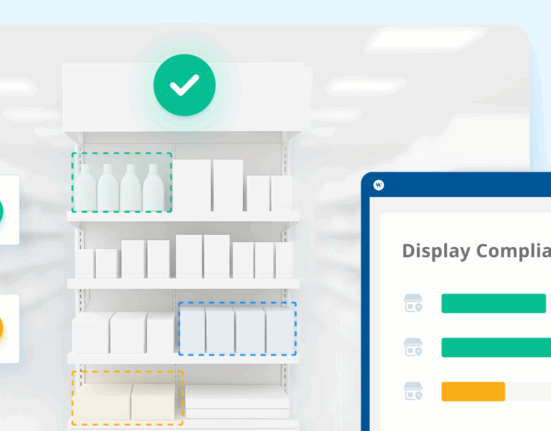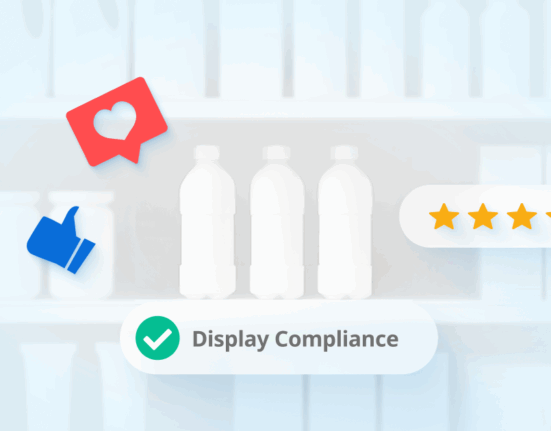Understanding the difference between trade promotion and consumer promotion is crucial for any business seeking to maximize its market impact and sales potential. These two promotional strategies, while aiming to stimulate demand and increase sales, target distinct audiences and employ different methods.
Trade promotions are directed toward the intermediaries involved in the distribution process, such as wholesalers, distributors, or retailers. They aim to encourage these entities to stock more of the product, allocate more shelf space, or promote it more vigorously to customers. Tactics often include bulk buying discounts, rebates, or incentives like free point of sale displays.
Consumer promotions, on the other hand, primarily target the end-user of a product or service—the customers. These strategies focus on increasing the consumption of the product, instigating initial trials, or encouraging more frequent purchases. Common tactics include coupons, discounts, sales contests, or free samples, all designed to enhance the product’s visibility and attractiveness to consumers.
By understanding these two distinct promotional strategies, businesses can create a balanced and effective marketing approach that stimulates both demand and supply, ultimately elevating their sales performance.

What is Trade Promotion?
As noted previously, trade promotion refers to marketing activities that aim to stimulate demand and increase the sales of a product or service among a business’ supply chain partners, such as wholesalers and retailers. These activities can be targeted at channel partners with incentives to encourage stocking and promotion of products, or they can be aimed directly at the consumer. Trade promotion strategies can include a variety of programs designed to engage with and incentivize partners, ultimately leading to increased sales.
For example, some common trade promotion strategies include:
- Discounts: Offering products at a reduced price can incentivize wholesalers and retailers to buy more stock, which can increase product visibility and sales.
- Free samples: Providing free samples can help retailers encourage new customers to try a product and stimulate demand.
- Buy One, Get One Free (Bogo): This popular strategy can motivate customers to purchase more products because they perceive a greater value.
- Contests and sweepstakes: These can engage customers, increase brand awareness, and stimulate sales.
Effectively implemented, these trade promotion strategies can lead to enhanced market presence, stronger buyer relationships, and increased sales.
What is Consumer Promotion?
Consumer promotion is a marketing strategy implemented to boost the sales of a product or service. It is designed to entice customers to make a purchase by offering incentives or benefits, thereby driving demand and stimulating revenue growth for the business.
Examples of consumer promotion tactics include:
- Coupons: These offer a direct incentive for customers, reducing the cost of the desired product or service. It’s a proven tactic to increase product trial, ushering in new customers and reviving lapsed ones.
- Discounts and Sales: Temporary reductions in price can attract cost-conscious consumers and encourage bulk purchase.
- Loyalty Programs: These are designed to reward repeat customers, foster customer loyalty, and encourage continued business.
- Samples or Trials: By offering a free or reduced-price sample or trial, consumers can experience the product or service without full commitment, which may lead to a full purchase.
- Sweepstakes or Prizes: These generate excitement and offer customers a chance to win prizes, thereby increasing the visibility of the brand and product.

The Role of Trade Spend in Trade Promotion
Trade spend, often known as Trade Promotion Spending, is a crucial component of sales strategy. It comprises the capital that a company allocates toward promotional activities such as discounts, special offers, in-store promotional events, and product displays aiming to incentivize retailers and wholesalers. The primary objective is to enhance product visibility, stimulate demand, increase market share, and ultimately drive more sales. This strategic investment directly impacts a brand’s positioning in the market and its competitive standing, making it a vital aspect of business operations.
Trade spend is employed in trade promotion in several ways:
- Discounts and Special Offers: Brands often provide markdowns on their products to retailers. These exclusive deals, limited time offers, or bundled promotions incentivize purchases, stimulating demand for the product in the market.
- In-Store Promotions: Brands allocate a portion of their trade spending toward in-store promotional activities. These can include product demonstrations or sampling sessions, eye-catching product displays, or sponsored endcaps. These initiatives aim to capture customers’ attention, increase product visibility, and encourage impulse purchases.
- Cooperative Advertising: This involves brands contributing toward the advertising costs of a retailer. It could span across mediums like store flyers, digital ads, or television commercials. Such collaborations boost product visibility and can lead to increased sales.
- Shelf Placement Fees: Brands may also pay premium fees to retailers for advantageous shelf placements. Prime shelf space ensures better visibility and accessibility of the product, leading to higher sales.
The Impact of Trade Spend
The impact of trade spend on a company’s marketing strategy can be substantial and multifaceted. Allocating funds wisely in trade spend can revolutionize a brand’s marketing approach in several ways:
- Strengthening Brand Image: A well-executed trade promotion strategy, supported by an appropriate level of trade spend, can help in enhancing the brand’s image in the market. Through engaging and innovative promotional activities, a brand can create a memorable impression on both the retailers and the consumers, thus strengthening its positioning.
- Boosting Brand Awareness: Trade promotions, aided by trade spend, provide an excellent platform for a company to elevate its brand visibility. By leveraging cooperative advertising and in-store promotional activities, a brand gets more exposure, leading to increased brand awareness among consumers.
- Driving Customer Loyalty: When customers are continually exposed to a brand via discounts, special offers, or in-store promotions, it boosts their purchasing frequency and builds loyalty over time. The more a customer interacts with the brand, the stronger their affinity becomes, effectively driving customer loyalty.
- Enhancing Competitive Advantage: A well-planned trade spend strategy can help a brand stand out in a competitive marketplace. By offering exclusive deals and securing prime shelf placement, a brand can gain a competitive edge, attracting more customers and driving sales.
Overall, a strategically allocated trade spend can amplify a company’s marketing efforts, creating a ripple effect that benefits the brand, retailers, and consumers alike. It’s a powerful tool that, when managed intelligently, can greatly contribute to a company’s success.
Choosing the right promotional strategy depends heavily on the specific goals of the business, the nature of the product, and the behavior of the target market.
Understanding the Distinctions: Trade Promotion vs Consumer Promotion
Trade promotions and consumer promotions constitute two main approaches to marketing. Each of these has its unique objectives and benefits, and choosing the right one depends on the specific goals of an organization.
Trade Promotion
Trade promotions target the supply chain partners including distributors, wholesalers, and retailers. These promotions are designed to motivate partners to stock more of a product or to promote a product more aggressively. Techniques used in trade promotions include discounts on bulk purchases, incentives, free products, and exclusive deals. The benefits of trade promotions include increased visibility in retail stores and outlets, improved relationships with partners, and the possibility of gaining better shelf space.
Consumer Promotion
Consumer promotions, on the other hand, aim directly at the end consumers. The primary objective of these promotions is to increase product awareness and generate immediate sales. Methods of consumer promotions include coupons, sweepstakes, rebates, and loyalty programs. These techniques encourage consumers to buy more or choose one brand over another. The benefits of consumer promotions include increased short-term sales, improved customer loyalty, and enriched data about consumer behavior.
While both trade promotions and consumer promotions strive to increase sales, their targets and methods differ significantly. Therefore, the choice between these two more traditional sales promotions will largely depend on an organization’s specific marketing objectives and strategies.
The Role of Trade Spend in These Differences
In consumer promotions, the trade spend is a key factor in facilitating immediate sales uplift. It supports rebate and coupon strategies, offering direct savings in purchase price to consumers, thus incentivizing product trials and encouraging repeat purchases. However, the impact of trade spend on consumer promotions is more short-term and often results in a temporary sales spike.
Trade promotions involve a more strategic allocation of trade spend. The goal here is to incentivize retailers to stock and prominently display the brand’s products, thereby securing better shelf visibility and potentially leading to long-term sales growth. The benefits of trade spend in this context include enhanced relationships with trade partners, improved product positioning, and increased market penetration.
Therefore, understanding where to allocate trade spend—whether toward trade or consumer promotions—can significantly influence an organization’s marketing outcomes. By carefully considering their brand strategy and objectives, companies can leverage trade spend effectively to optimize both immediate sales and long-term market presence.

How to Make Both Promotions Work for Your Business
Trade promotions and consumer promotions are key elements in the marketing mix, each offering unique advantages. Trade promotions work to increase wholesale purchases by incentivizing retailers with benefits such as bulk discounts or exclusive deals. This can lead to an expanded distribution network and enhanced shelf space, which invariably improve product visibility and brand recognition.
On the other hand, consumer promotions directly target the end consumers, employing tactics such as coupons, rebates, and contests to stimulate immediate sales or increase brand loyalty. These strategies can significantly enhance customer retention and create positive brand associations in the minds of the consumers.
Choosing the right promotional strategy depends heavily on the specific goals of the business, the nature of the product, and the behavior of the target market. A balanced approach that utilizes both trade and consumer promotions can maximize reach and amplify sales. Ultimately, understanding the nuances and potential benefits of each type of promotion can help businesses craft effective marketing strategies that drive growth and profitability.









